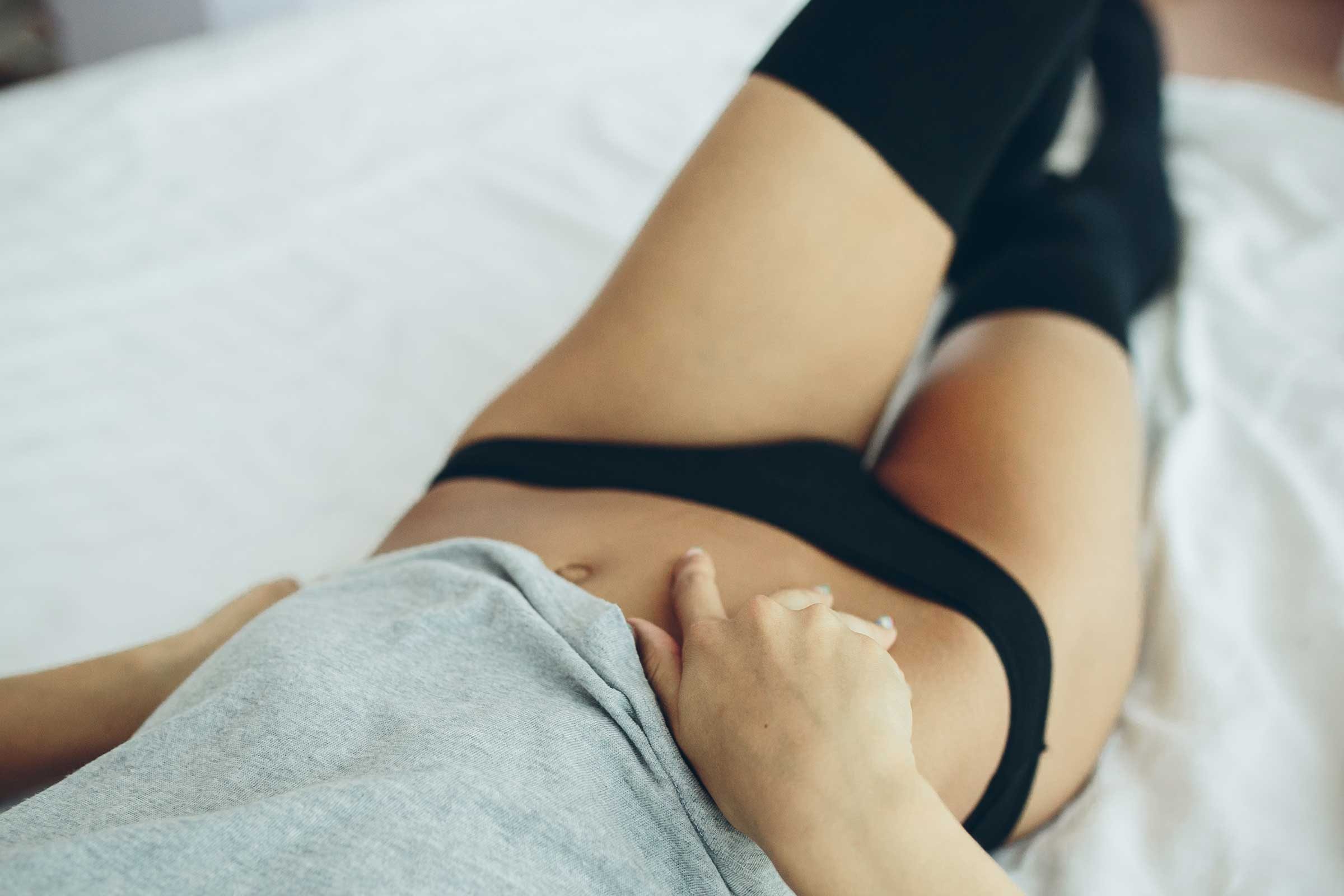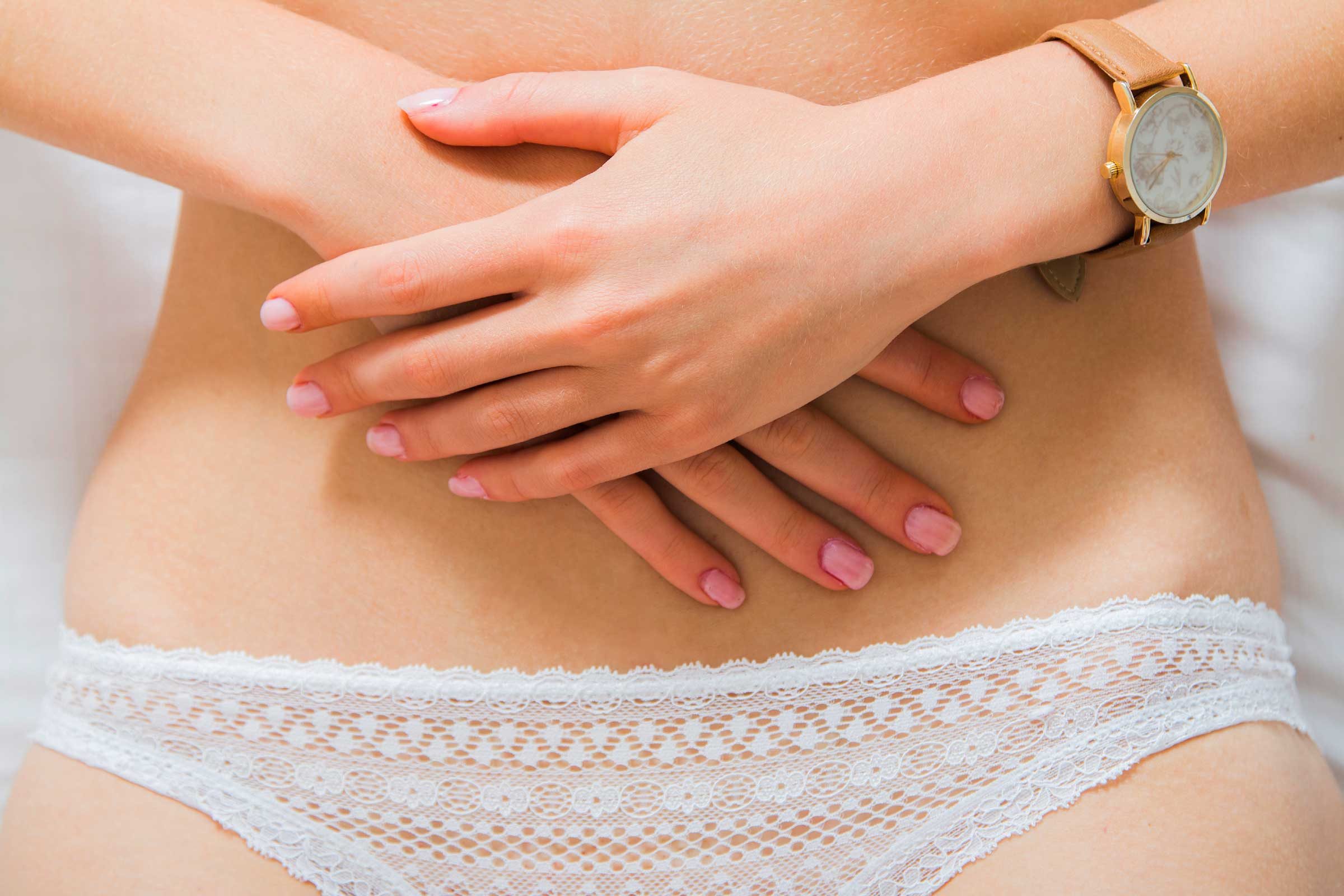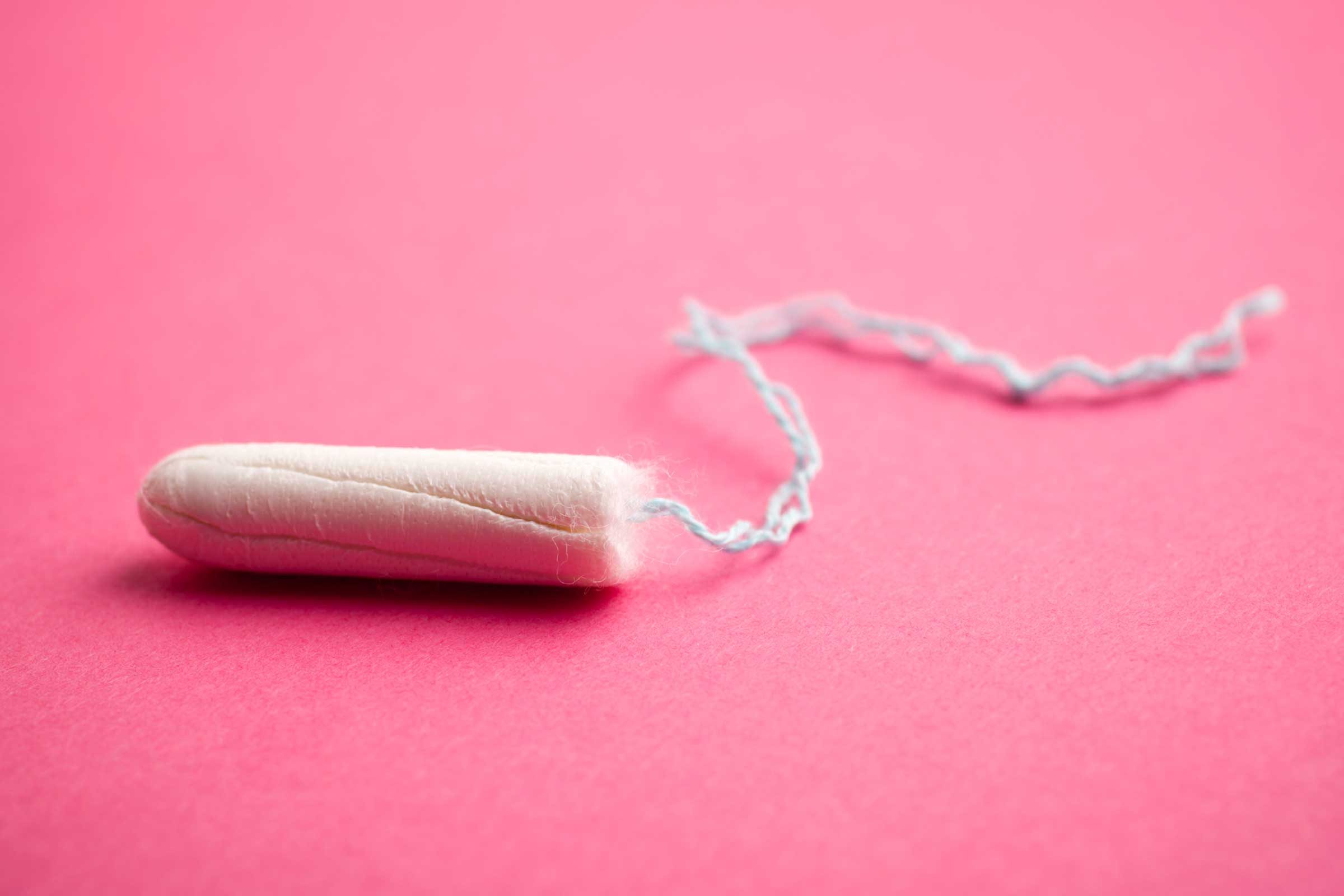
Work out more
Yes we realize the irony in telling women who pee a little during every jumping jack that the solution to their woes is, well, more jumping jacks. But getting fit is one of the best things you can do for your body and that includes your pelvic floor muscles (the “keep the pee in” muscles), says R. Grady Bruce, MD, a board-certified urologist in female pelvic medicine and reconstructive surgery. You can try workouts that target your core, including your pelvic floor, like Pilates, or feel free to pick any exercise you’re comfortable with—the point is simply to increase your overall fitness, he says. And take advantage of some of the other methods below (like protective underwear) while you work on building that strength.

Wear pee-proof undies
Underwear technology has come a long way, ladies. Gone are the days when bulky “adult diapers” were your only options. Now we have Knixwear, a line of cute and sexy underthings designed to catch any and all leakage. They’re made for working out, so you can do everything from yoga to Zumba to bootcamp without fear of wetting yourself. These aren’t a solution to exercise incontinence but they can sure make you comfortable while you try these other fixes.

Kick up your kegels
You’ve heard this before, but Kegels are the best single exercise you can do to help cure exercise incontinence, says Dr. Bruce. You can do them anywhere, anytime, since all it requires is squeezing the muscles that hold your urine in. If you’re not sure which ones those are, practice stopping your urine mid-stream while peeing. Still need help? Dr. Bruce recommends seeing a physical therapist who specializes in strengthening the pelvic floor. Here’s what you need to know about pelvic floor dysfunction.

Lose weight
Every extra pound you carry puts extra pressure on your bladder, Dr. Bruce says. This is why he recommends a sensible weight loss strategy to his overweight and obese patients struggling with exercise incontinence. Bonus: All the things you do to lose weight, like eating right and exercising, can help address other sources of incontinence like weak pelvic muscles and constipation. Win-win! Here are other secrets your bladder wishes it could tell you.

Eat more fiber
Surprisingly, constipation can be a major cause of stress incontinence, Dr. Bruce says. Hard stool can put pressure on the bladder, causing leakage. You can remedy this problem by increasing your water intake, upping your fiber, and exercising more. If that isn’t getting the blockage to budge you may want to see your doctor about using a stool softener or other medication. Avoid over-the-counter laxatives, however; as using them for more than a day or two can actually make your problem worse. You can also try these home remedies for constipation.

Wear a pad and tampon
You may not be menstruating but many women find that inserting a tampon before exercise can help prevent urine leaks by putting a little extra pressure on the urethra. In addition, putting a panty liner (for little leaks) or maxi pad (for bigger squirts) can help keep you dry. Feminine hygiene products are cheap, easily accessible, and simple to use.

Try laser therapy
If your exercise incontinence is more than kegels and diet can help, there are several minimally invasive in-office procedures your doctor can do, Dr. Bruce says. “Pelvic or vaginal laser procedures—variations of some forms of “laser rejuvenation”—can tighten the tissue and improve control,” he says. But, he cautions, while many patients report good results there are very few actual studies on its effectiveness.

Get injectibles
Doctors can now inject a biologic “paste” known as a urethral bulking agent into the urethra around the sphincter muscle to better help keep urine in, Dr. Bruce says. It works in about 80 percent of patients, he says, but you have to get repeat injections every few months to keep it working.

Consider surgery
For truly intractable cases of incontinence, the only long-term solution is surgery, Dr. Bruce says. The most common type is called a “sling surgery” where a sling is created to support the bladder. It’s an outpatient surgery and has a one-week recovery time. He adds that it’s successful for 90 percent of patients, but does lose its effectiveness somewhat over time. “Women who have the surgery also have far better sex lives,” he says. “They have more sensation, fewer urinary tract infections (UTIs), and more satisfaction—not to mention much less embarrassment.”